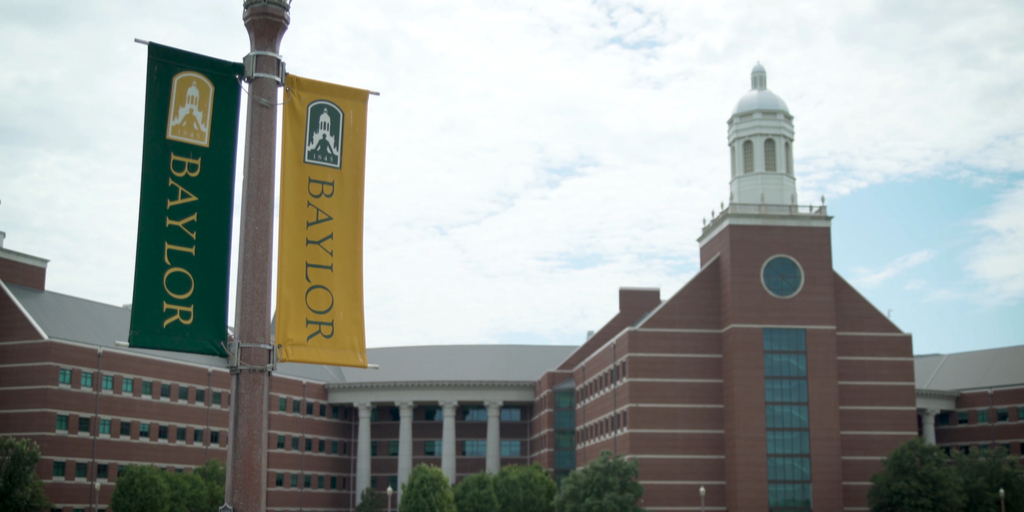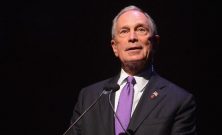“Mike” (the name he has on his website) Bloomberg’s commencement speech at Harvard is quite a work of art.
Assessing the Faith-Friendly Colleges
The thesis of John Schmalzbauer and Kathleen A. Mahoney’s new book is that, rather than lamenting a narrative of declension, we should be celebrating the resilience of religion in American higher education. However bad things were for religion on campus some time ago, they’re getting better. There’s more academic attention to the study and teaching of religion, more institutional attention to religious identity and denominational relations, and more at least “spiritual” activity in student life.
So the authors argue in an exhaustively documented book (almost a third of which, roughly 95 pages, offers 794 footnotes) that carries dust jacket blurbs from some of the biggest names in the religion-and-higher-ed field.
If I simply endorsed the views of two great American Presidents—Thomas Jefferson and Dwight Eisenhower—I might be right there with the authors and the authorities, celebrating the conclusions reached in The Resilience of Religion in American Higher Education. The Jefferson who asserted that “It does me no injury for my neighbor to say that there are twenty gods, or no God; it neither picks my pocket nor breaks my leg” would be on board with its message. After reading the book, he might conclude, as he did in 1781, that “religion is well supported; of various kinds, indeed, but all good enough; all sufficient to preserve peace and order.” The Eisenhower who said, “our government has no sense unless it is founded in a deeply felt religious faith, and I don’t care what it is” might also have joined this bandwagon.
To be sure, both men are a little more demanding than I have just indicated, given that the former famously asked if “the liberties of a nation [can] be thought secure when we have removed their only firm basis, a conviction in the minds of the people that these liberties are the gift of God”; and the latter did concede that, whatever religion Americans chose to believe in, it had to affirm that all men are created equal. In other words, these two leading Americans held, as many Americans do, that religion can and should play a civically salutary role. According to Schmalzbauer and Mahoney, there is evidence that the resilient religion they describe in fact plays that role, “fostering religious literacy and engaging diversity.”
Still, I have my doubts as to whether these aims are sufficiently robust to provide a solid ground for our democratic republic. Of course, I would rather that the people occupying the cultural, political, and economic heights know something about religion. But how much that knowledge informs their character and conviction remains an open question, especially when our authors cite Nathan Hatch, an authority at least as prominent as the suppliers of their blurbs, concerning “the relativism of the modern university.”
I also do not want to minimize the importance of diversity in a country for which the moniker “post-Christian” is an increasingly apt description. How we most effectively and productively uphold diversity is a very difficult question, regarding which our authors, with their cursory discussion (it makes little mention of the hostility that Jewish students encounter on numerous campuses, and skims the surface of the controversy regarding so-called “all-comers” policies regarding student-run organizations) offer precious little guidance. I would love to say that their copious footnotes provide helpful signposts for further study but, at least with regard to this issue, that isn’t really the case.
The real question, it seems to me, is the degree to which the openness to religious pluralism that our authors praise (assuming, arguendo, that contemporary campus intellectual and social life actually cultivates it) is consistent with morally, theologically, and intellectually thoughtful religious faith. Schmalzbauer and Mahoney want to reassure us in this regard, offering some evidence, for example, that evangelical college attendees are more likely than their non-college counterparts to remain engaged with the church. Other observers (among them, Charles Murray in his 2013 book Coming Apart) make a similar argument, showing that all the institutions of civil society (including churches) are healthier in affluent, educated communities than they are in lower income areas.
Nonetheless, there are complicating circumstances that make me less sanguine.
In the first place, the evidence regarding evangelical college attendees seems not to be fine-grained enough to tell us which sort of pipeline through college and back to church produces this promising result. Does it depend on attending a faith-friendly college, like Calvin, Wheaton, or Baylor? Does it depend on being involved in a particular kind of student religious group at an otherwise secular university? In other words, does religious affiliation persist because of or in spite of what happens in college? From the lofty perspective Schmalzbauer and Mahoney offer us, we can’t tell.
A second problematizing consideration involves another bit of data they report:
Researchers have . . . uncovered a positive correlation between higher education and religious liberalism. College-educated Americans tend to switch to mainline denominations and hold more liberal views of the Bible. Yet liberalization is not the same as secularization.
How this jibes with the previous observation is unclear. We were initially given the impression that evangelicals who go to college are more likely to remain evangelicals than those who don’t. Now, we’re permitted to surmise that evangelicals who go to college may come away from the experience churched but no longer evangelical. The (mostly college-educated) folks who attend church with me on Sundays wouldn’t be particularly happy if that were the case.
What’s more, Schmalzbauer and Mahoney unsurprisingly affirm in a variety of ways that a major factor in the decline narrative they contest is the indisputable collapse of mainline Protestantism, in society at large and in its institutional and organizational presence in higher education. Liberalization might not be the same as secularization, but it seems to be a giant step in its direction.
In other words, part of their response to the story of decline is that it could be proceeding by a slow and tortuous path. Again, if so, it would be cold comfort for those who lament the decline.
In sum, we remain entitled to wonder whether a campus where professors study religion as historians and sociologists; where there’s concern on the part of those charged with marketing the college that embracing or reaffirming a denominational brand might be perilous for enrollment or fundraising; and where more or less theologically orthodox student organizations may or may not be permitted to compete on a level playing field, is a campus that’s more fertile ground for Ross Douthat’s “bad religion” than for a “resilient” tradition. The authors leave me unconvinced that the religion that persists in this environment is one worth believing in.
I could end this review here; on reflection, though, I don’t think I’ve fully done justice to the book. Despite my reservations, it does its readers a significant service, beginning with the reminder that many American colleges were founded by religious people who aimed to promote their beliefs by educating generations of faithful preachers, professionals, and laypeople. The American denominational college was meant to conserve, develop, and hand down a tradition, one that was supposed to influence and inform the culture in which it was situated.
Our authors also argue that the secularization of our colleges was less the result of impersonal social forces and more the consequence of an intentional effort on the part of people who devoted substantial resources to achieving their goal. They show, in other words, that secularization is not an inevitable process, but a project.
We learn from this book that the revival of religion on campus also depended upon people with resources—several foundations (Pew, Danforth, Templeton, and Lilly) receive prominent mention in this regard. If secularization is a project, so is the revival of religion on campus. This is good news, if not necessarily for American higher education as a whole (for the reasons I’ve given), then certainly for particular institutions that are loved and supported by men and women of faith and means.
Schmalzberger and Mahoney offer us another valuable reminder: Whatever may be true of Western Europe and North America, in much of the world religious faith is thriving. What’s more, many of those who live their faith at home in Asia and Africa come to America as immigrants and students. Because (as I do not doubt) our colleges and universities wish to serve their “market,” it is inevitable that my colleagues and the administrators who preside over our institutions will come face to face with genuine religious diversity. While they might be tempted to tame that diversity by filtering everything through a pseudo-Rawlsian concept of “public reason,” I have some confidence that our brothers and sisters from across the world will resist that. There will undoubtedly be some uncomfortable times and conversations, but a genuine religious pluralism holds out the prospect of compelling us all to inquire into what we truly believe.
And then we’ll understand the real connection between religion and higher education.


